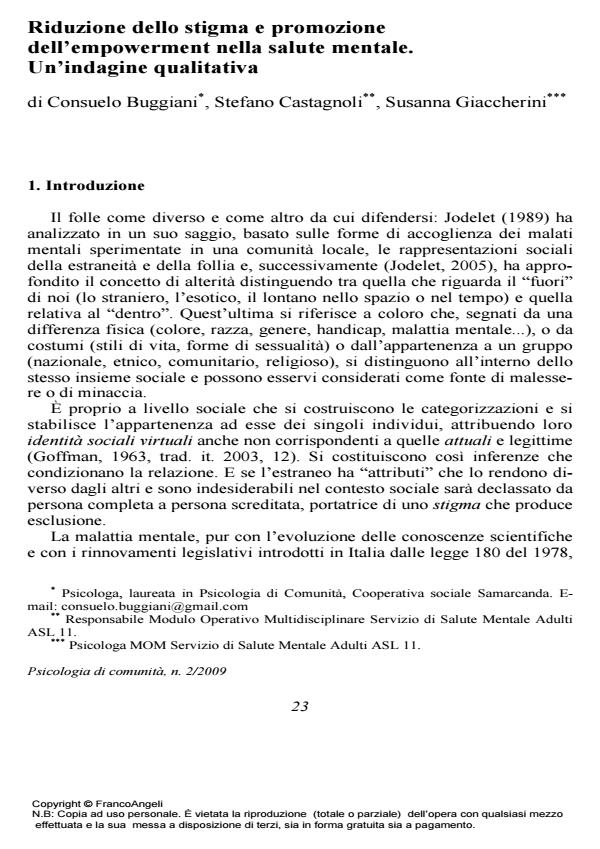Riduzione dello stigma e promozione dell’empowerment nella salute mentale. Un’indagine qualitativa
Journal title PSICOLOGIA DI COMUNITA’
Author/s Consuelo Buggiani, Stefano Castagnoli, Susanna Giaccherini
Publishing Year 2010 Issue 2009/2
Language Italian Pages 13 P. 23-35 File size 818 KB
DOI 10.3280/PSC2009-002003
DOI is like a bar code for intellectual property: to have more infomation
click here
Below, you can see the article first page
If you want to buy this article in PDF format, you can do it, following the instructions to buy download credits

FrancoAngeli is member of Publishers International Linking Association, Inc (PILA), a not-for-profit association which run the CrossRef service enabling links to and from online scholarly content.
Reducing stigma and increasing empowerment in mental illness. A qualitative research - People with mental illness often face with stigma in local communities, that may reduce perceived social support. Empowering activities may work, on the contrary, to promote social inclusion. Presence of associations is considered an indicator of social capital, often related to wellbeing. This study explores motivations of patients of Mental Health Service to participate in sports associations, and analyzes changes in wellbeing. Participants are patients, professionals, members of associations, local authorities. Method: Semi structured interviews. Data analysis was based on qualitative method (software T.Lab and Atlas.ti). Results have highlighted how participation in these groups may enhance patients’ empowerment, improve their quality of life, and reduce stigma. This experience may be an worktool to promote a better mental health and an "open space" building social networks.
Keywords: Mental health, stigma, mental health service, empowerment, social network, sports association.
Consuelo Buggiani, Stefano Castagnoli, Susanna Giaccherini, Riduzione dello stigma e promozione dell’empowerment nella salute mentale. Un’indagine qualitativa in "PSICOLOGIA DI COMUNITA’" 2/2009, pp 23-35, DOI: 10.3280/PSC2009-002003